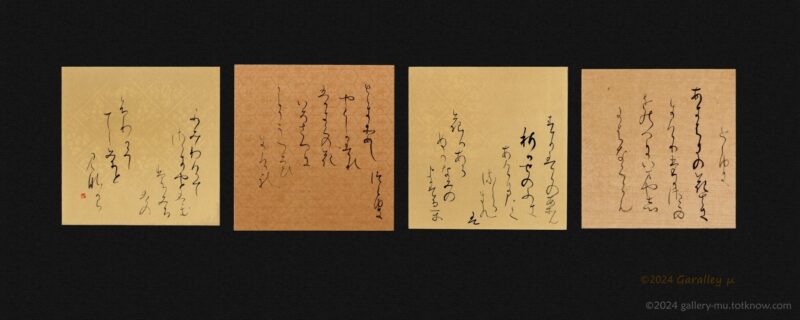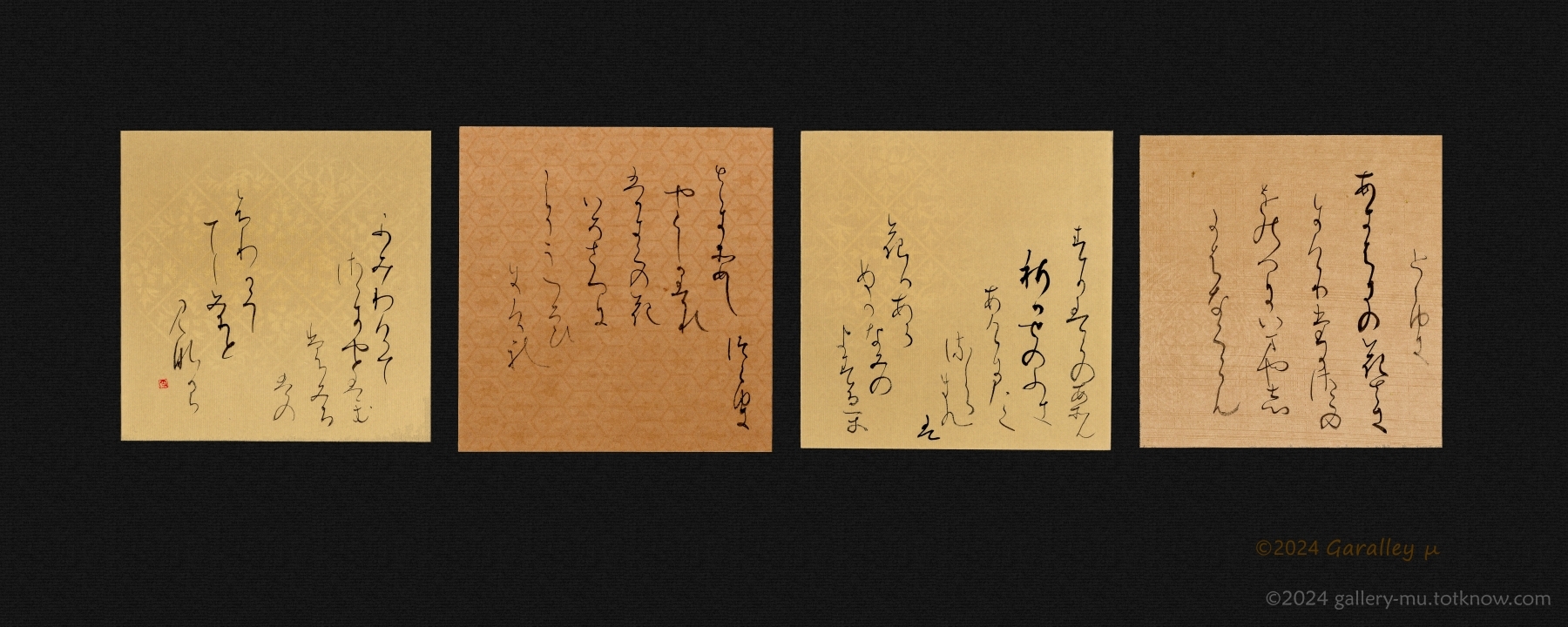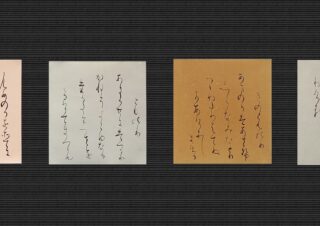#205 Four pieces of autumn poems

| Size: | each card about 13×13 cm |
|---|---|
| Dressing: | scrolling |
What kind of verse?
| verse: | (1) Toshiyuki Akihagi no, hana saki ni keri, takasago no, wonohe ni ima ya, shika ha naku ramu (2) Sugahara no ason Akikaze no, fukiage ni tateru, shiragiku ha, hana ka aranu ka, nami no yosuruga (3) Turayuki Sakisome shi, yado shika hare ba, kiku no hana, iro sahe ni koso, utsurohi ni kere (4) Fumiwake te, sarani ya to hamu, momidiba no, furikakushi teshi, michi to minagara |
|---|---|
| in: | before 913 |
brief comment
The Sunshoan Shikishi is an exceptional classical calligraphy work created about 1,000 years ago.
Until now, I have been captivated by the expressive power of the Sunshoan Shikishi, but I mostly viewed it as a subject of research rather than appreciating its beauty for what it is. I realized that I hadn’t been purely enjoying its aesthetics. However, when I saw the original work at the recent Yomiuri Shodo Exhibition, I was simply struck by how beautiful it was—it moved me deeply.
When I attempted to copy the Sunshoan Shikishi myself, I found that my work had a chaotic feel to it, as if the ‘entropy’ was too high, making it difficult to reproduce its elegance. This time, I made a conscious effort to absorb the brushstrokes and rhythm, aiming for a faithful reproduction of the original. After many attempts, I felt I had come much closer to capturing the essence of the piece.
Through this process, I made numerous new discoveries and gained a deeper understanding. I introduced a reproduction of the Sunshoan Shikishi in a previous exhibition two years ago, but I feel that this current work is much closer to the original.
That said, there are still many areas where I fall short, and there remain numerous challenges to overcome. Moving forward, I aim to continue pursuing the beauty of the Sunshoan Shikishi, striving to deepen my understanding and enhance my expressive ability.



